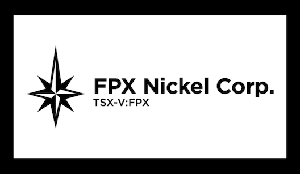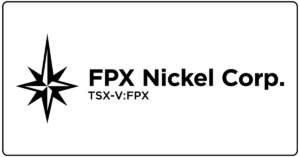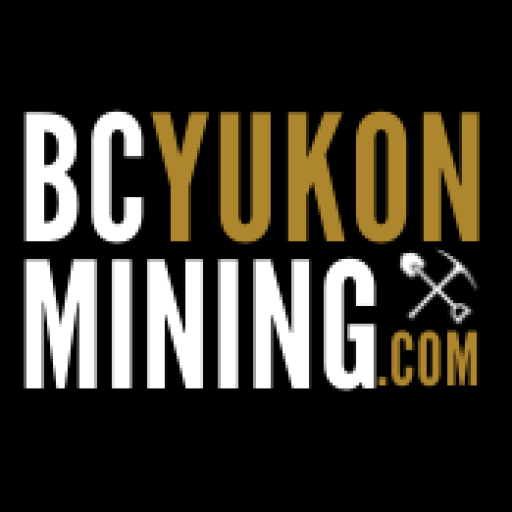| Toronto, ON – August 11, 2021 – White Gold Corp. (TSX.V: WGO, OTC – Nasdaq Intl: WHGOF, FRA: 29W) (the “Company”) is pleased to announce the commencement of the maiden diamond drilling program and the completion of a structural Geological interpretation at its Betty Property, contiguous to and 15km northeast of Western Copper and Gold Corporation’s (TSX: WRN, NYSE: WRN) Casino deposit (14.5 Moz gold & 7.1 Blbs copper of Measured & Indicated and 6.6 Moz gold and 3.3 Blb copper of Inferred), and 40km east of Newmont Corporation’s (NYSE: NEM, TSX: NGT) Coffee Gold deposit (2.17 Moz Indicated & 0.50 Moz Inferred gold). This is the second diamond drilling campaign of the company’s fully funded 2021 exploration program on its district scale 420,000 hectare land package, representing over 40% of the emerging White Gold District in Yukon, Canada, backed by strategic partners Agnico Eagle Mines Limited (TSX: AEM, NYSE: AEM) and Kinross Gold Corporation (TSX: K, NYSE: KGC). |
| Highlights Include: The maiden diamond drilling program on the property is comprised of 2,000 to 2,500m in 10-12 holes on the Betty Ford and Betty White targets. At Betty Ford, drilling will test the target over an approximately 500m strike length, including the zone which returned 1.08 g/t Au over 50.29m in 2018 RAB drilling.The Betty property is located on the eastern extension of the Coffee Creek Fault, which hosts Newmont’s Coffee deposit containing gold resources of 2.17 Moz Indicated and 0.50 Moz Inferred.A new structural geological interpretation based on airborne magnetics, high-resolution LiDAR data, and soil geochemistry has significantly improved the understanding of structural controls on gold mineralization. Gold mineralization is noted on second and third order W and NE trending faults as seen at Newmont’s Coffee Gold Deposit.Geochemistry analysis and interpretation has also revealed a zone of possible porphyry style mineralization identified with elevated Copper, Molybdenum and Silver values on the property. “We are excited to commence the maiden diamond drill program on our Betty Property. This program has been designed to test several of the prospective gold anomalies on the property which are located in close proximity to existing large gold and copper deposits situated along the same fault structure. The diamond drill program has been designed based on the recently completed structural interpretation in addition to the soil geochemistry and other exploration results from previous seasons,” stated David D’Onofrio, CEO of the Company. Figures accompanying this news release can be found at: https://whitegoldcorp.ca/investors/exploration-highlights/ Betty Property The Betty property comprises of 860 claims which covers an area of 17,127 hectares and is strategically located contiguous to and 15km northeast of Western Copper and Gold Corporation’s (TSX: WRN, NYSE: WRN) Casino deposit (14.5 Moz gold & 7.1 Blbs copper of Measured & Indicated and 6.6 Moz gold and 3.3 Blb copper of Inferred), and 40km east of Newmont Corporation’s (NYSE: NEM, TSX: NGT) Coffee Gold deposit which hosts gold resources of 2.17 Moz Indicated & 0.50 Moz Inferred (Figure 1). The Betty covers the strike extension of the east-trending Coffee Creek Fault which exerts important structural controls on mineralization at the Coffee deposit. A diamond drilling program comprising 2,000 to 2,500m in 10-12 holes has recently begun at the Betty Ford and Betty White targets, which marks the commencement of the first ever diamond drilling program on the property. At Betty Ford, drilling will test the target over an approximately 500m strike length, including the zone which returned 1.08 g/t Au over 50.29m in 2018 RAB drilling. |
| Figure 1 – Betty Project Location Map |
| Figure 1a – Aeromagnetics 1VD |
| The property hosts several early-stage exploration targets including the Betty Ford, Betty White, Betty Grable, Betty Black and Mascot targets. The Betty property is located approximately 65km southeast of the Company’s flagship Golden Saddle and Arc Deposits, which have a combined mineral resource of 1,139,900 ounces Indicated at 2.28 g/t gold and 402,100 ounces Inferred at 1.39 g/t gold. The Betty property was originally staked in 2010 and since that time has seen intermittent exploration. Early work from 2010 to 2013 was carried out by Ethos Gold Corp. which completed soil geochemistry surveys (coarse grid), airborne magnetic and radiometric surveys, the acquisition of high-resolution satellite imagery, trenching and RC drilling. The majority of Ethos’ work was focused in the Mascot area leaving large portions of the property underexplored. More recent work has included mapping and prospecting, infill soil geochemistry, 27 IP lines totalling 11.2km line km, LiDAR imagery, GT probe sampling and RAB drilling in 2018, with BETFRDRAB18-002 returning 1.08 g/t Au over 50.29m from 4.57m depth, including 2.24 g/t Au over 9.41m from 19.81m depth. A summary of all significant historical drill intercepts from the Company and Ethos Gold Corp. can be found in Figure 2. |
| Figure 2 – Historical RAB/RC Drilling & Soil Samples |
| The property is underlain primarily by Late Devonian metasedimentary rocks of the Snowcap Assemblage which have been intruded by the Middle Cretaceous Dawson Range granodiorite and diorite in the southern portion of the property. The Snowcap Assemblage rocks consist of a folded package of quartzite, biotite gneiss/schist, quartz feldspar gneiss, augen gneiss, and minor marble and hornblende gneiss. The units form an open, east-west trending, isoclinal antiform with units on the southern limb having a gentle dip to the south and units on the northern limb having a moderate to steep dip to the north. The structural and geological framework of the Betty and Hayes property located immediately to the east is characterized by 4 major fault arrays: 1) WNW-trending Yukon River Shear Zone (YRSZ); 2) E-W trending Coffee Creek fault; 3) NW-trending Big Creek fault; and 4) NE-trending Dip Creek fault. The Coffee Creek and Big Creek fault systems are highly prospective structures that, respectfully, control orogenic gold at Newmont’s Coffee Gold deposit and porphyry and epithermal gold mineralization at Triumph Gold Corp.’s (TSX.V: TIG) Nucleus and Revenue deposits to the southeast. Furthermore, the YRSZ constitutes a major crustal break within the Yukon-Tanana terrane, while the Dip Creek fault develops southeast of the Casino Cu-Au-Mo porphyry deposit transecting the Dawson Range in a NE-orientation. Additional information on the Betty property can be found in the Company’s press release dated May 19, 2021. Structural Geological Interpretation A new structural geological interpretation was recently completed on the Betty and Hayes properties by consulting structural geologist Dr. Matias Sanchez and Dr. Thomas Bissig of Fault Rocks Inc., by integrating airborne magnetics and electromagnetics (EM), high-resolution drone LiDAR data and soil geochemistry. Key findings are summarized below and interpreted structures and soil geochemistry data are shown in Figures 3-5. |
| Figure 3 – Magnetic Interpretation |
| The earliest fault systems are W to WNW trending, southerly verging thrust faults (later movement is dextral strike slip) including the Coffee Creek Fault and Yukon River Shear Zone, and NW trending oblique second order faults. Principal foliation and layering dips to the north. Later fault systems include the NW-trending Big Creek Fault and the NE-trending Dip Creek Fault. Additional 2nd and 3rd order faults also developed at this time, possibly in the Mid to Late Cretaceous. |
| Figure 4 – Structural-geomorphology |
| The most important structures controlling gold mineralization as outlined by soil geochemistry appear to be 2nd and 3rd order NE trending and W trending structures. These areas include the Betty Ford, Betty White, Betty Grable and Mascot zones. More rarely gold mineralization appears to be associated with regional scale structures as is the case with the Betty Black zone on the Coffee Creek Fault. The geochemical interpretation has also illustrated the presence of possible porphyry style mineralization in the NE portion of the property where elevated Cu, Mo, Ag and S values are present in soil samples. Mineralization in the Mascot area as defined by elevated Au-As-Pb-Zn appears to be intrusion-related and may represent distal mineralization associated with a porphyry system at depth. |
| Figure 5 – Betty claims Geochem integration |















